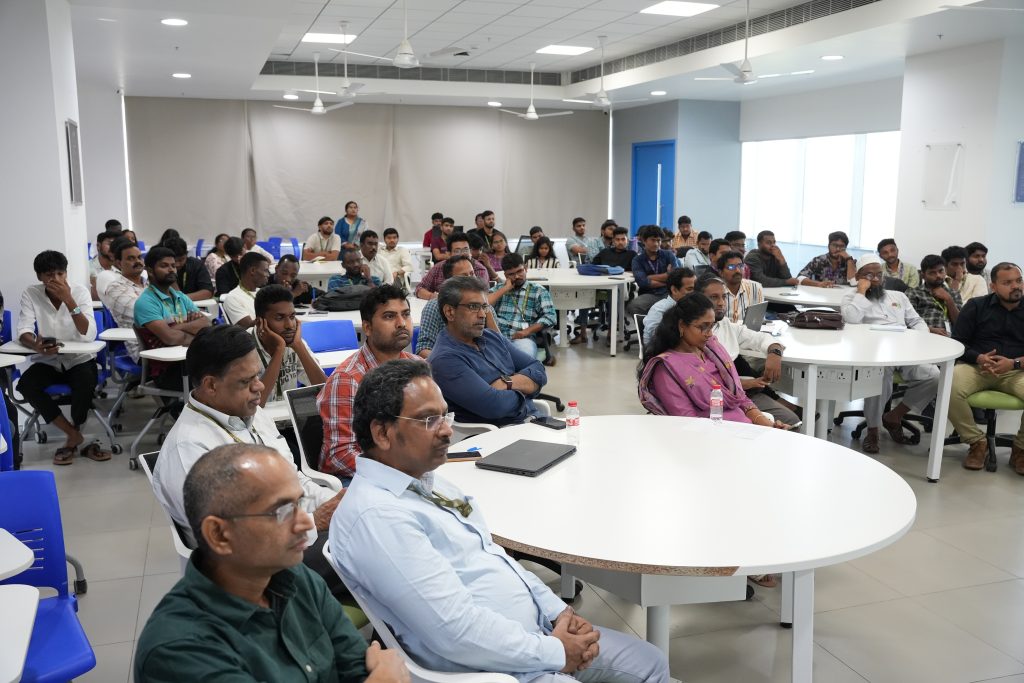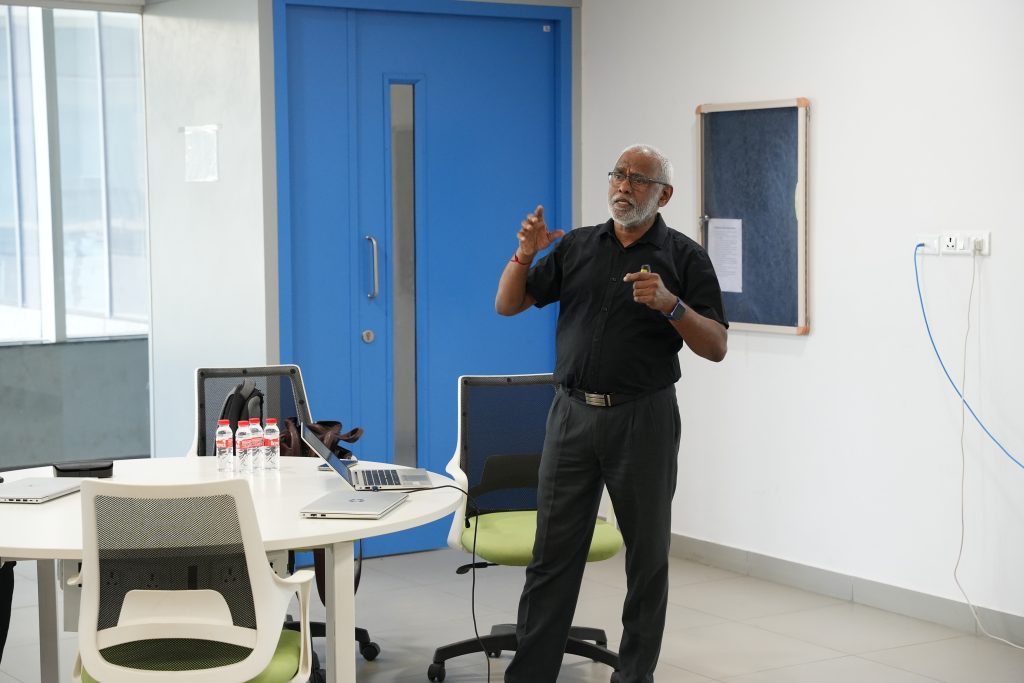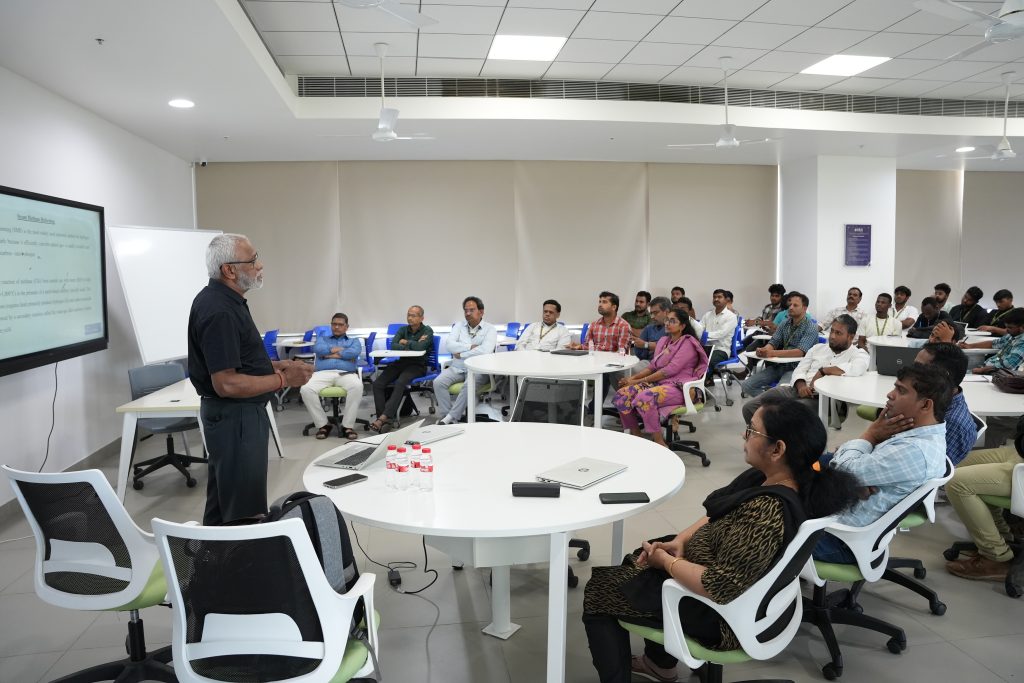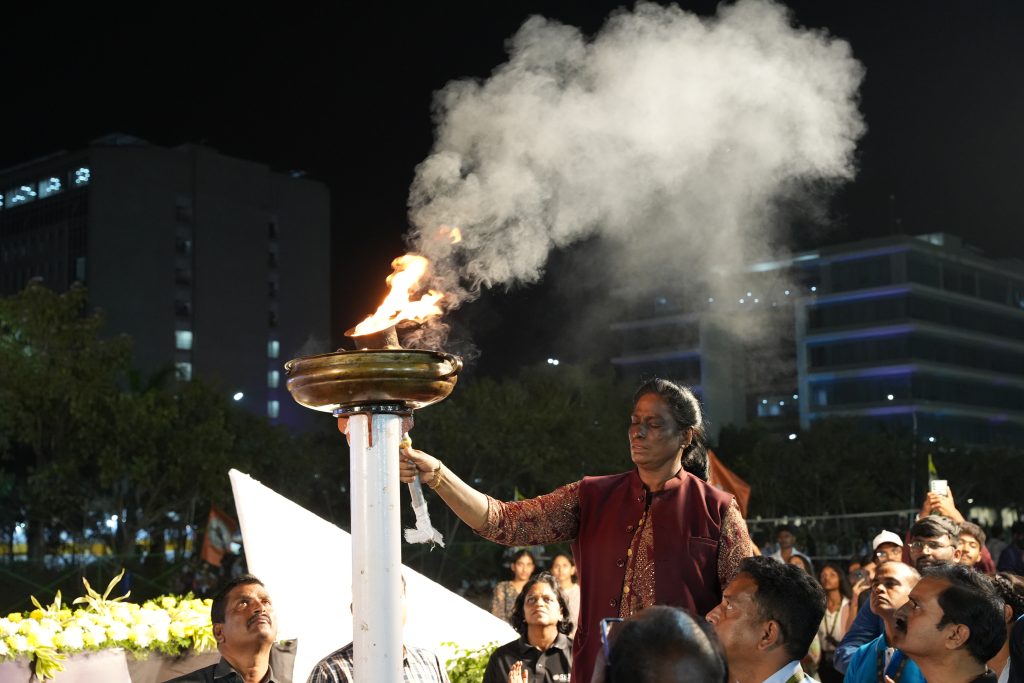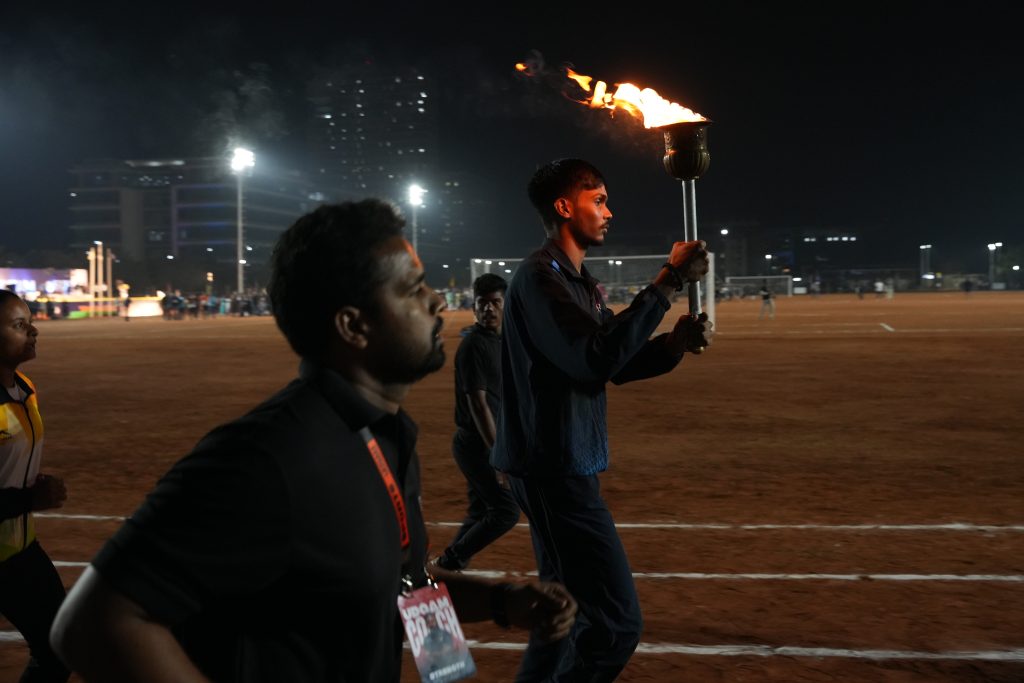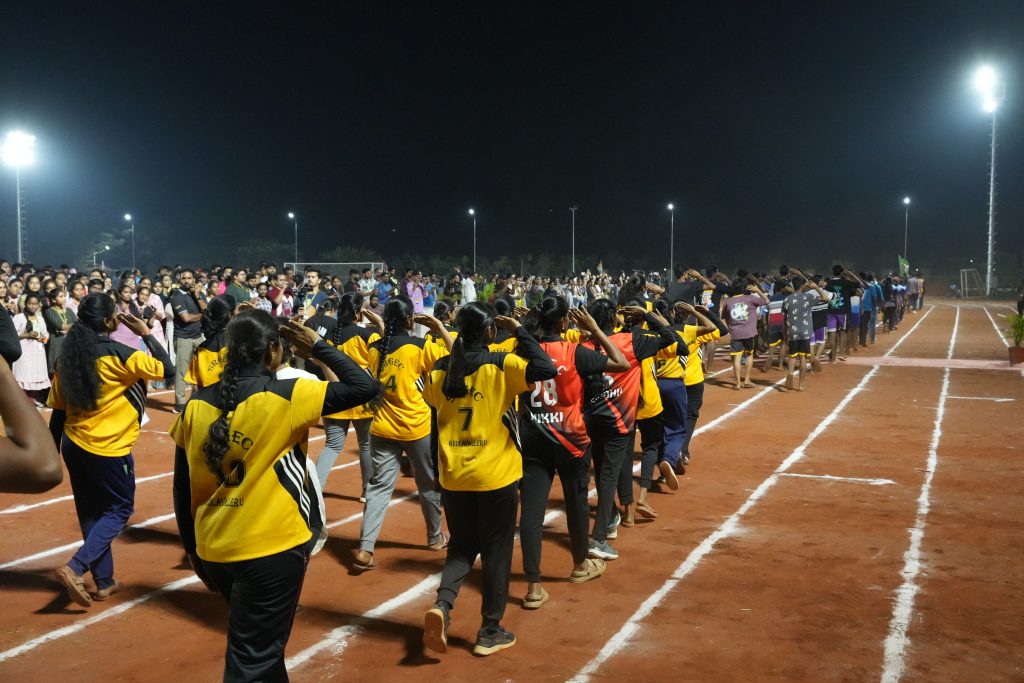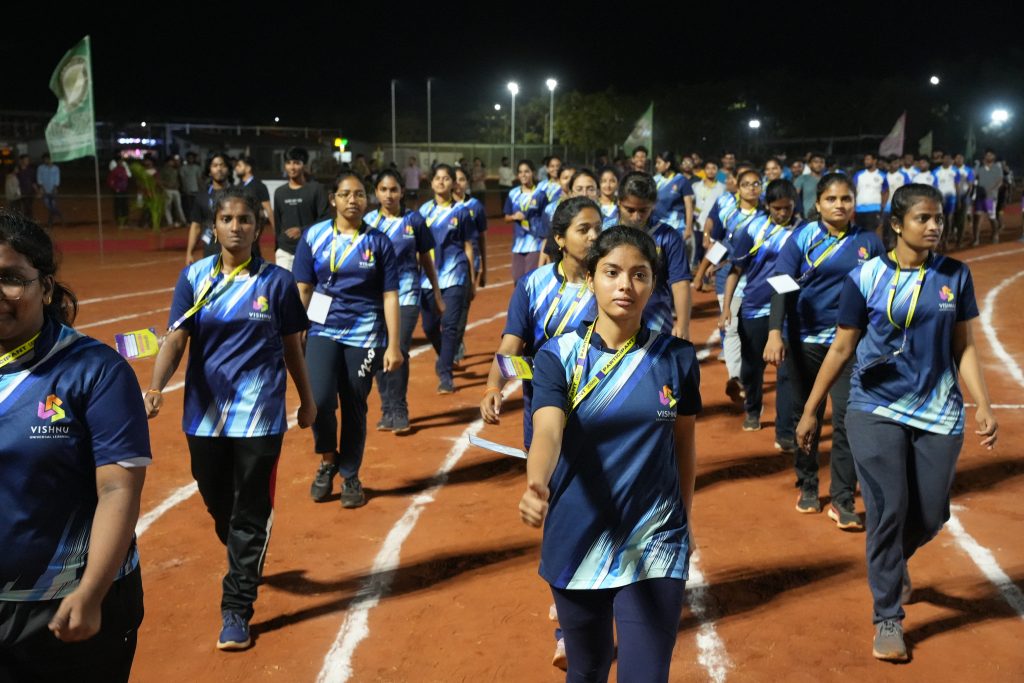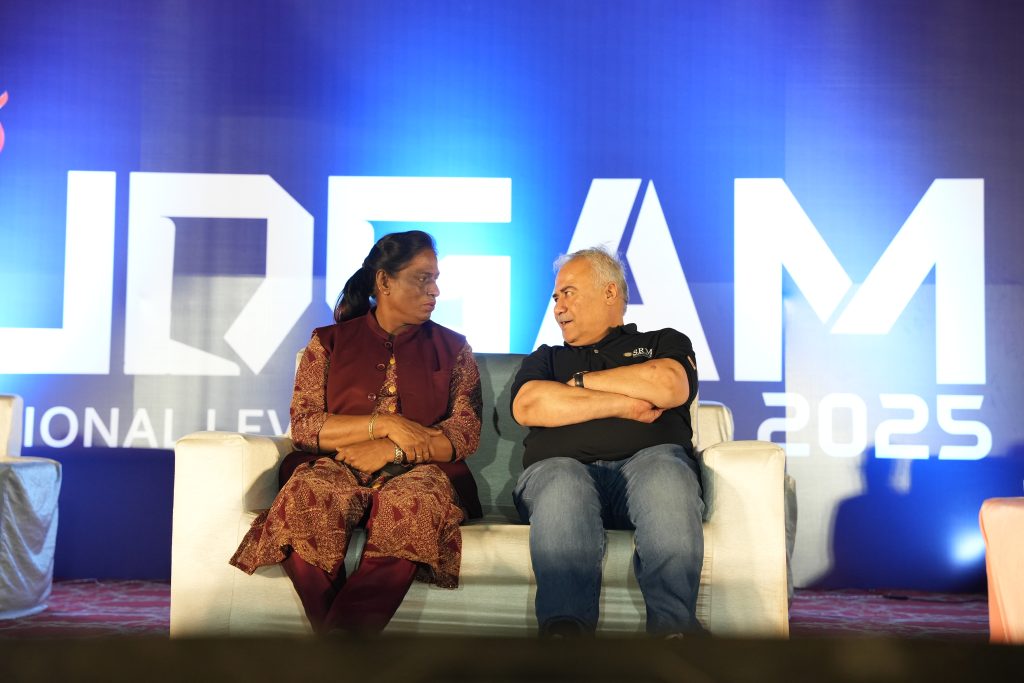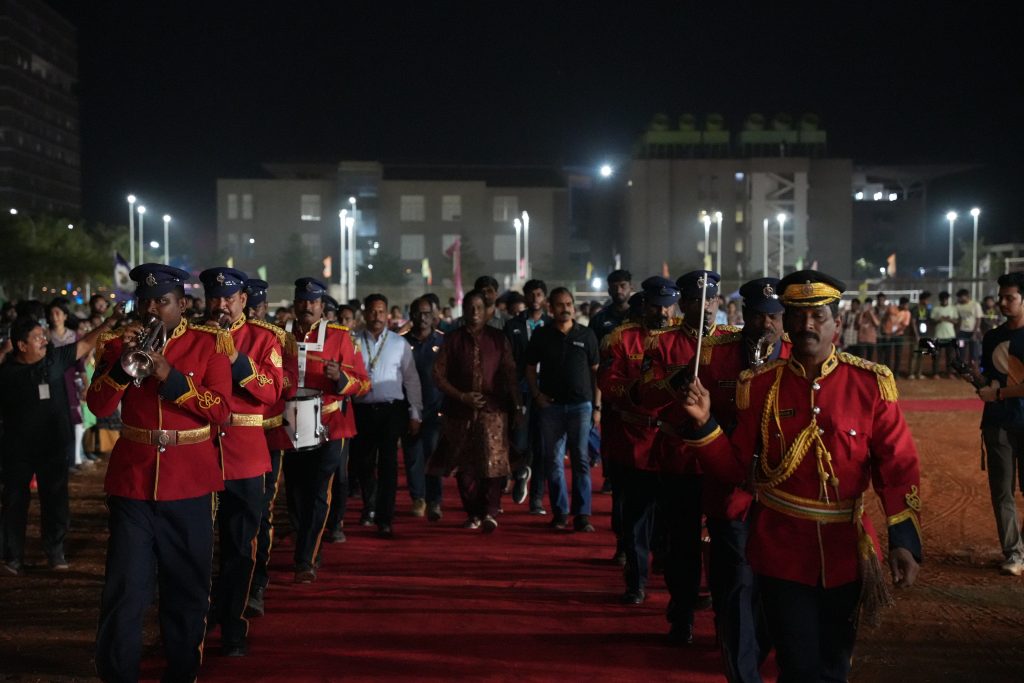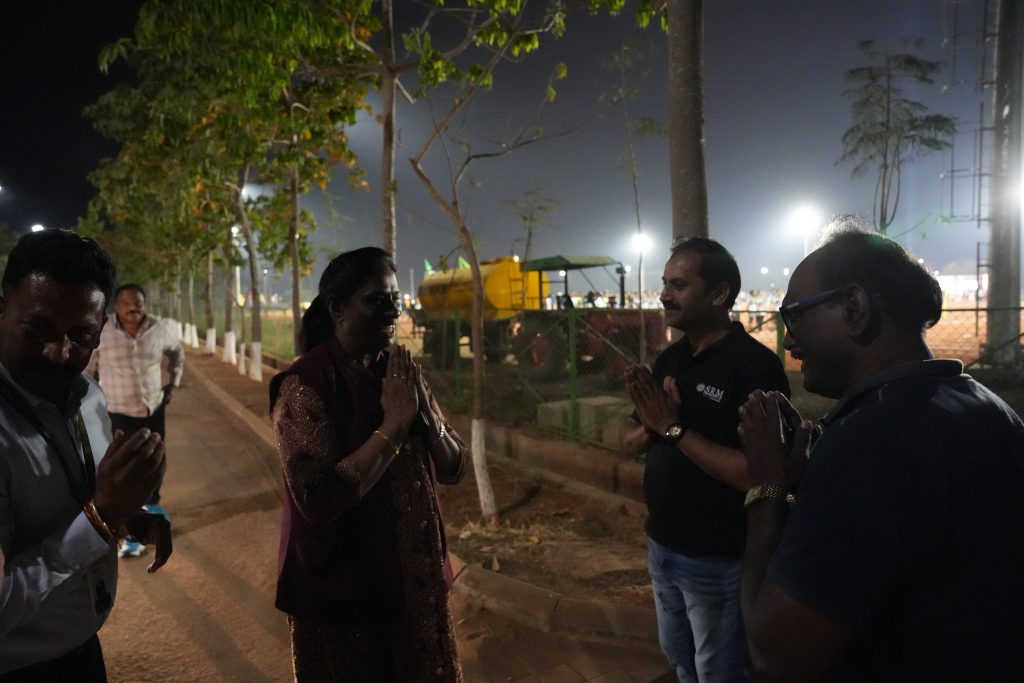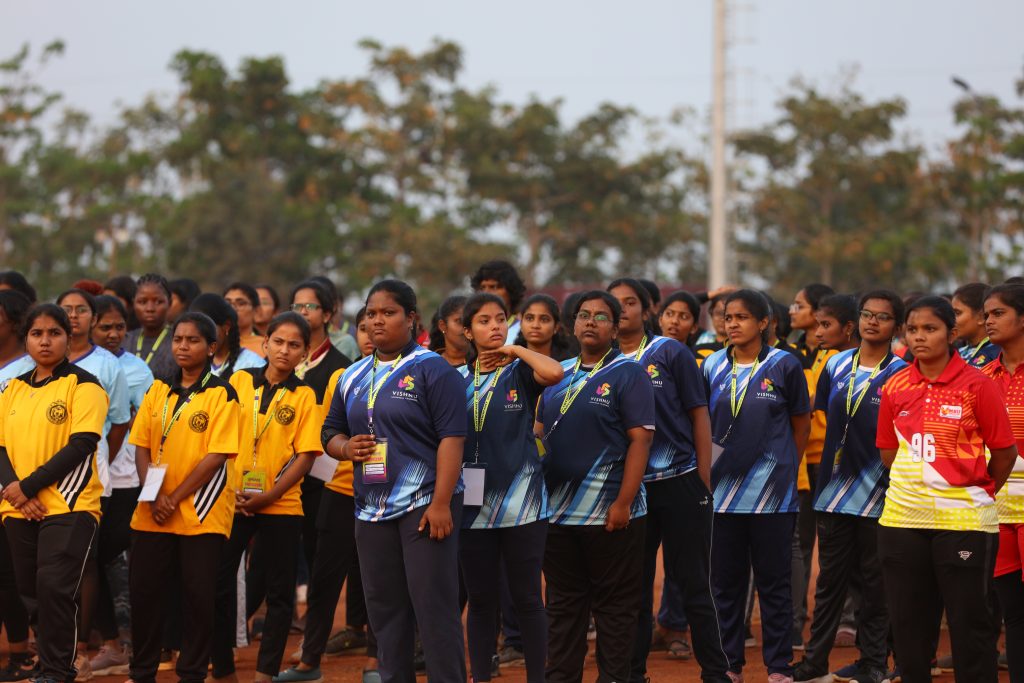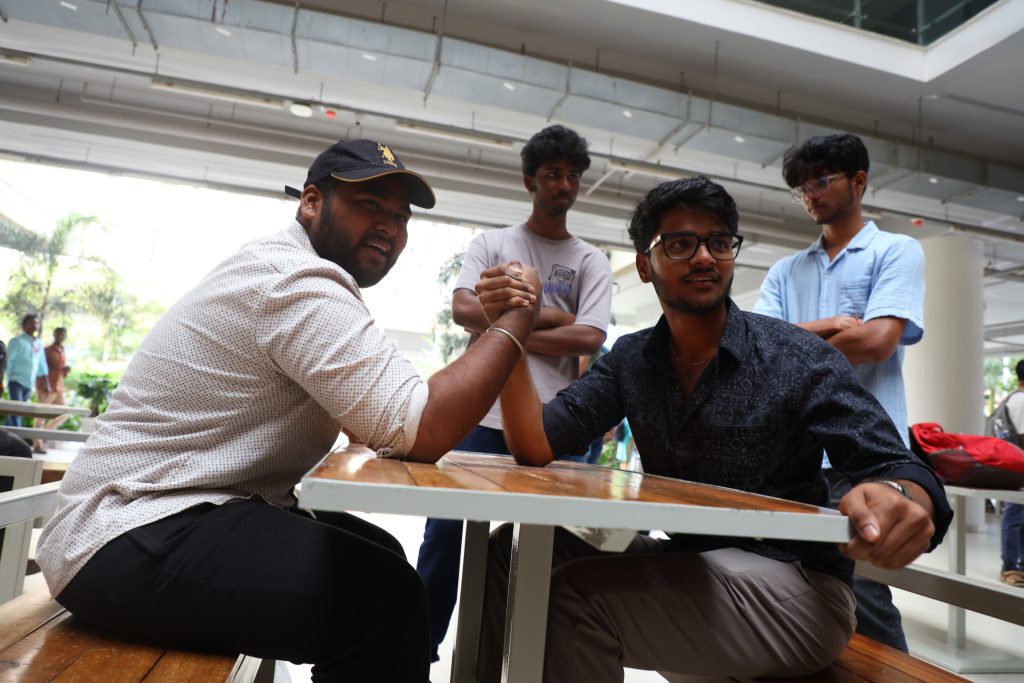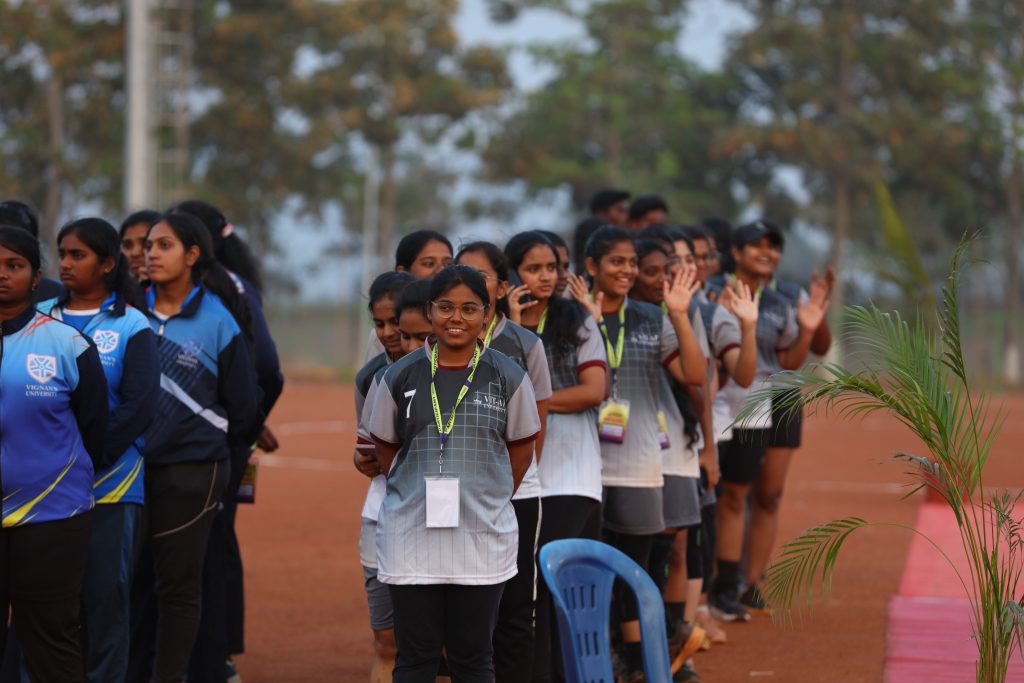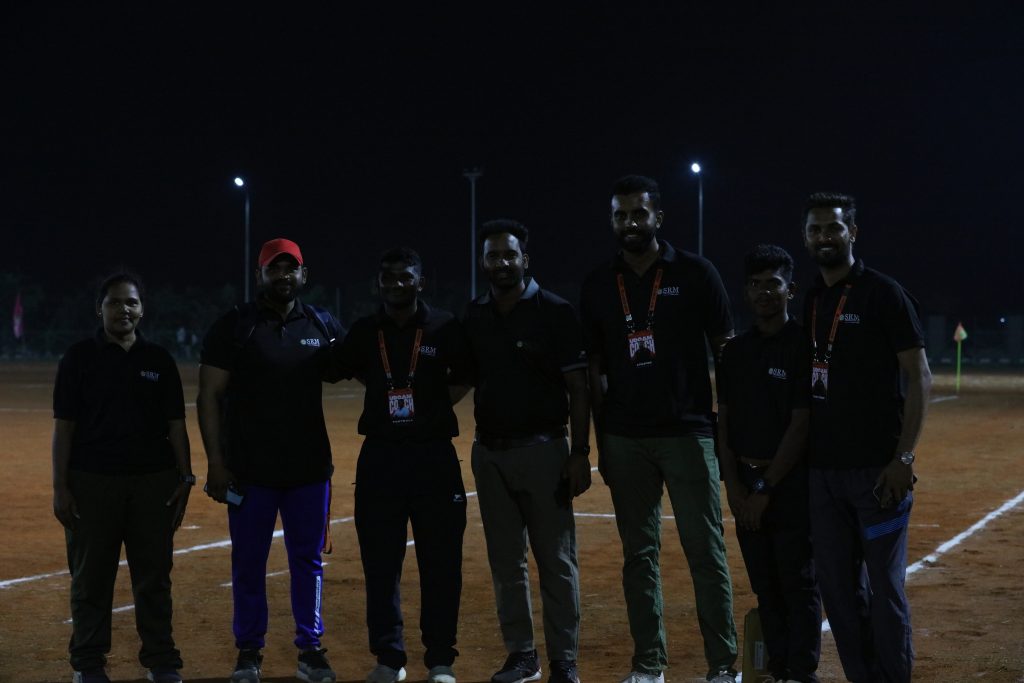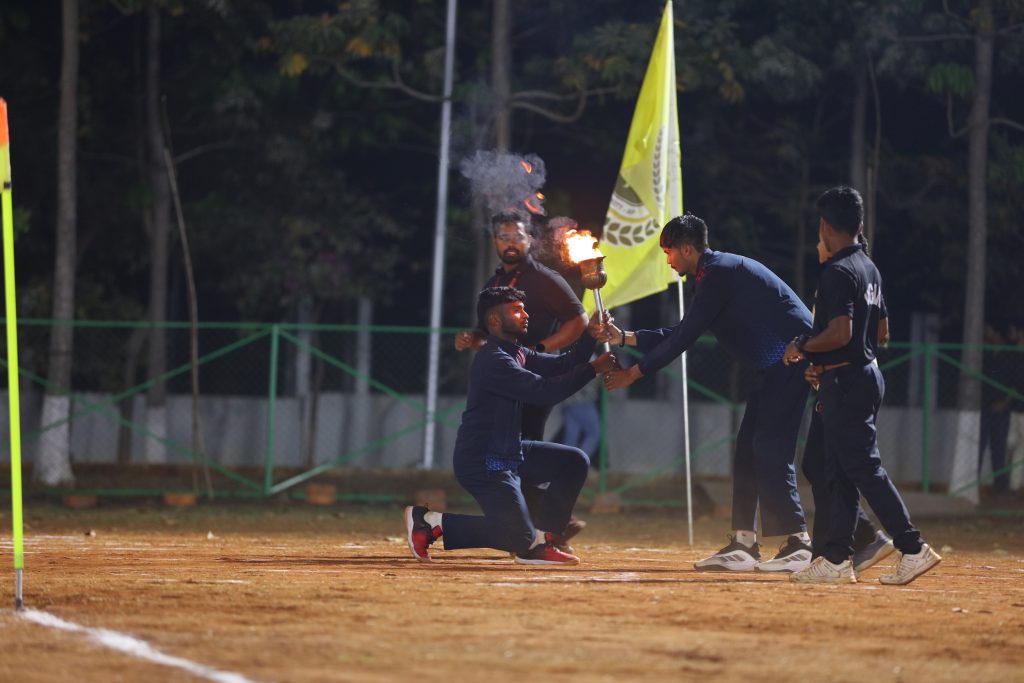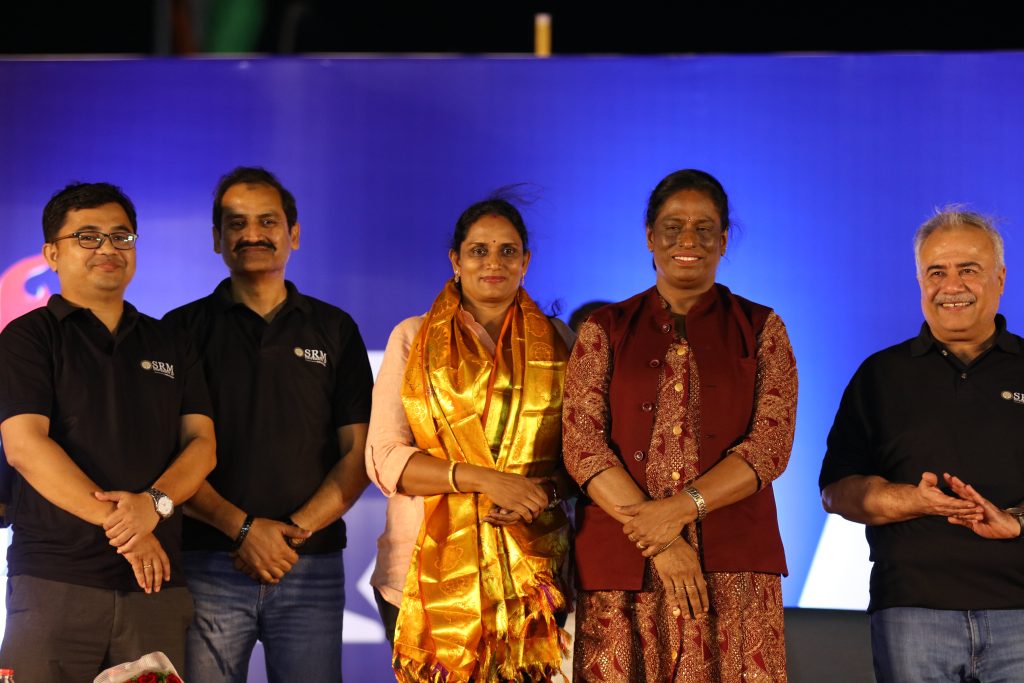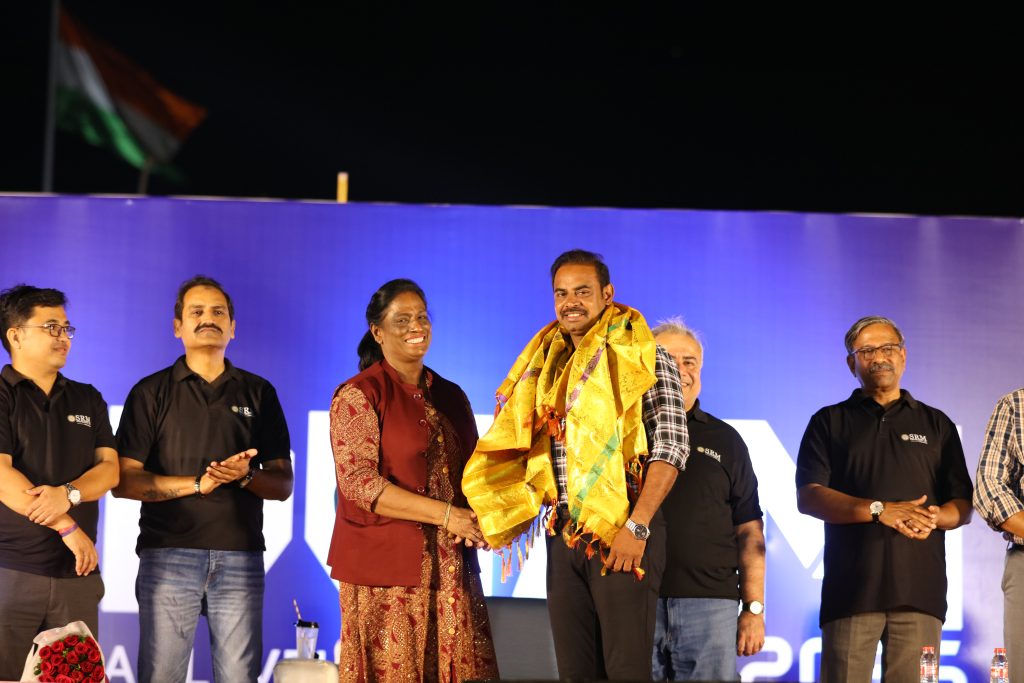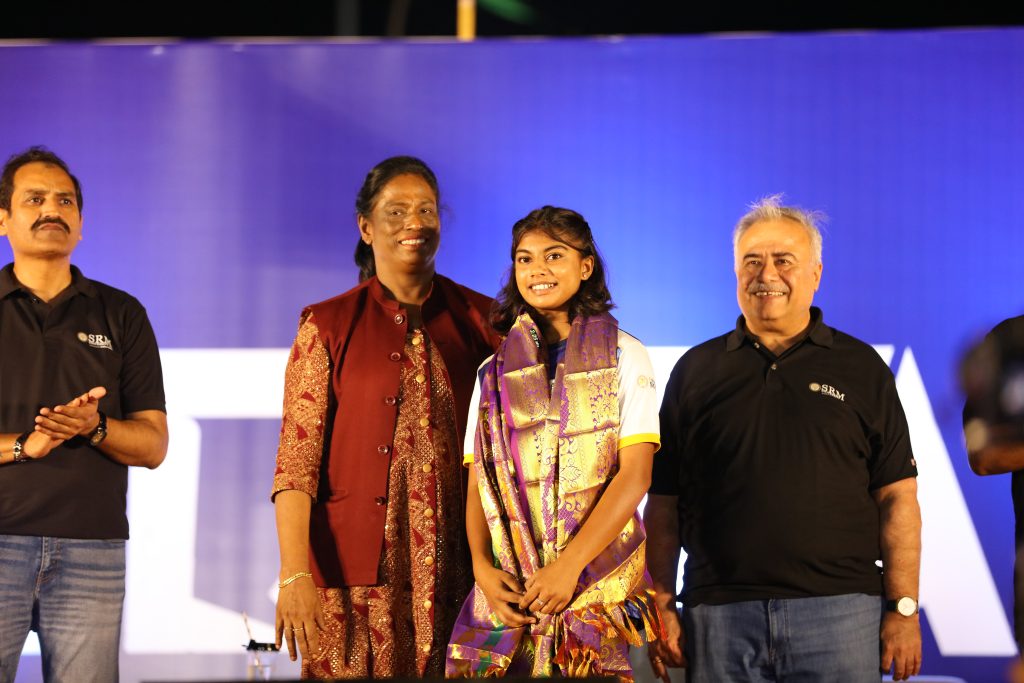SRM-AP All News
ALL News
- “A New Dawn of Water Sustainability”: 1st Water Elixir Meet 2025 March 3, 2025
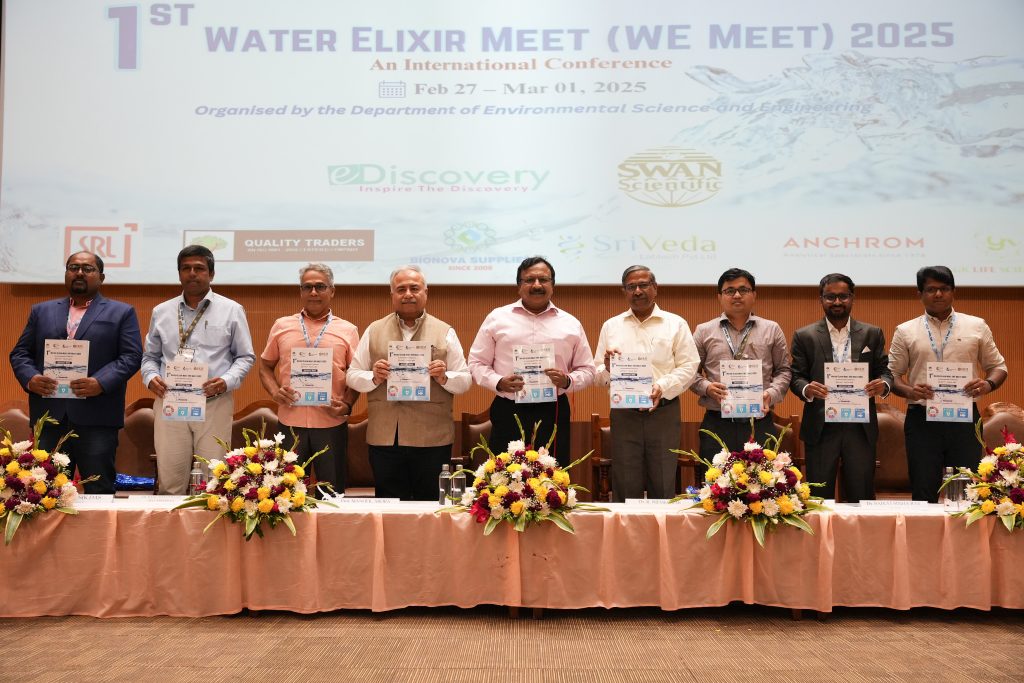
The Department of Environmental Science and Engineering hosted the 1st Water Elixir Meet (WE Meet 2025), a three-day international conference bringing together global minds to address one of the world’s most pressing challenges: water sustainability and security on Feb 27 – Mar 01, 2025. The conference was inaugurated by Prof. Rajasekhar Balasubramanian, Provost’s Chair Professor Group Head (Hydraulics, Hydrology and Climate Resilience), Department of Civil and Environmental Engineering, National University of Singapore.
“The available water quantity is decreasing, and the water quality is declining. There is a dire need to look into these parameters holistically and not separately. The We Meet 2025 is an ideal platform where scientists, researchers, policymakers, and industry leaders converge to address and manage global water resources efficiently and strategically,” stated Prof. Rajasekhar in his inaugural address.
WE Meet 2025 brought together more than 150 research abstracts and an esteemed lineup of global speakers, sharing groundbreaking insights into water resources, hydrogeology, and environmental sustainability. Prof. Kwang Ho-Choo from Kyunpook National University, South Korea, Prof. Shiao-Shing Chen from National Taipei University of Technology, Taiwan, Prof. Fulvia Chiampo from Politecnico di Torino, Italy, were some of the notable international speakers who delivered keynote sessions at the conference.
Prof. Manoj K Arora, Vice Chancellor, remarked beyond academic and research possibilities, WE Meet 2025 aimed at fostering global partnerships, innovative solutions, and cultural exchange. He stated, “WE Meet 2025 is a timely conference organised to address critical issues such as water resource management and water conservation.” Dr Rangabhashiyam Selvasembian, Head of the Department of Environmental Science and Engineering, also opined that this groundbreaking gathering fosters dialogue for impact. He said that the conference is a testament to the power of creative action in securing a sustainable tomorrow.
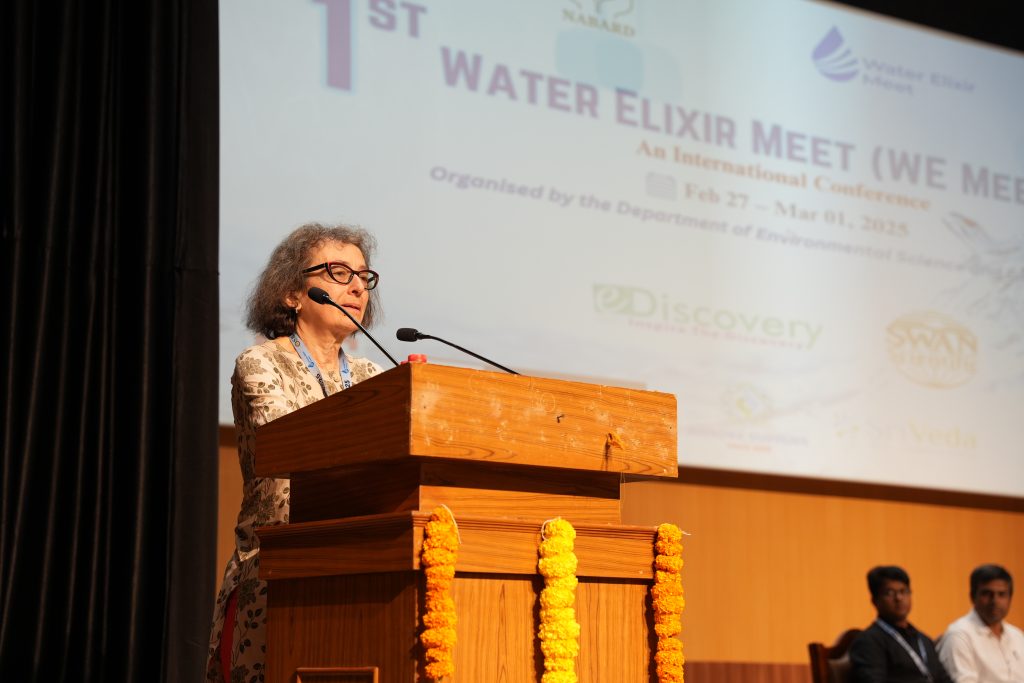
By showcasing cutting-edge technologies and driving policy advancements, WE Meet 2025 at SRM University-AP serves as a catalyst for real-world change. Exemplary research works such as the Best Oral Presentation and the Best Poster Presentation, were awarded top prizes at the valedictory ceremony. The conference also saw the participation of Registrar Dr R Premkunar, Dean – School of Engineering and Sciences, Prof. C V Tomy, Dean–Research, Prof. Ranjit Thapa, faculty, scholars and students of the varsity.
As the world grapples with increasing water challenges, this landmark international conference paves the way for a transformative journey to secure the future of water.
Continue reading → - Trio Publish Patent on VR Based Therapy Systems February 28, 2025
 The Department of Psychology at SRM University-AP is proud to announce the publication of the patent titled, “A System for VR-Based Psycho-Oncology Therapy with Real-Time Biofeedback and Cultural Adaptation” by Dr Ayesha Parveen Haroon and her Research Scholars-Ms Brilly Anto and Ms Keziah Mariyam Simon. This groundbreaking research introduces a virtual reality therapy system that integrates real-time biofeedback.
The Department of Psychology at SRM University-AP is proud to announce the publication of the patent titled, “A System for VR-Based Psycho-Oncology Therapy with Real-Time Biofeedback and Cultural Adaptation” by Dr Ayesha Parveen Haroon and her Research Scholars-Ms Brilly Anto and Ms Keziah Mariyam Simon. This groundbreaking research introduces a virtual reality therapy system that integrates real-time biofeedback.Abstract
This research introduces a VR-based psycho-oncology therapy system that integrates real-time biofeedback and cultural adaptation to enhance the psychological well-being of cancer patients. The system utilizes virtual reality to create immersive therapeutic environments while continuously monitoring physiological indicators such as heart rate variability (HRV), skin conductance response (GSR), and respiratory rate to assess stress levels in real time. A processing unit analyzes this data using stress detection algorithms and selects personalized therapeutic interventions, including guided imagery, music therapy, mindfulness practices, and culturally relevant content. The system adapts dynamically to patient responses, ensuring an individualized approach to mental health support. Additionally, a cloud-based module securely stores therapy metrics for long-term monitoring and personalized care adjustments. This innovation offers a patient-centred, technology-driven intervention that enhances mental health outcomes, improves treatment adherence, and provides accessible psychological support for cancer patients in both clinical and home settings.
Explanation in layperson’s terms.
Cancer treatment can be emotionally challenging, leading to stress, anxiety, and depression. This research introduces a Virtual Reality (VR)-based therapy system that helps patients relax and manage stress through immersive environments like calming landscapes and guided meditation. The system monitors heart rate, breathing, and stress levels in real time and automatically adjusts therapy by playing soothing music, guided imagery, or relaxation exercises. It also includes culturally relevant content, making therapy more personalized and accessible, even for patients in remote areas. In short, this system acts as a virtual therapist, offering personalized mental health support to cancer patients during treatment and recovery.
Practical Implementation & Social Impact
Practical Implementation
Used in hospitals, cancer centers, and home-based care for stress management.
Helps psycho-oncologists and mental health professionals provide personalized therapy.
Supports palliative care and extends telehealth access to remote areas.
Social Implications
• Reduces stress and anxiety in cancer patients, improving their quality of life.
• Increases accessibility to mental health support, especially in underserved areas.
• Enhances treatment adherence by promoting emotional well-being.
• Offers culturally relevant therapy, making interventions more relatable and effective.
This system bridges the gap in psycho-oncology care, making mental health support more engaging, accessible, and personalized.
Future Research Plans
• Enhancing VR therapy with AI-driven personalization.
• Integrating EEG-based biofeedback for stress monitoring.
• Developing affordable, portable VR solutions for remote care.
• Conducting clinical trials for validation.
• Expanding telehealth access for home-based psycho-oncology care.
Continue reading → - Parameters to Measure a University Entrepreneurial Ecosystem February 28, 2025

With the increasing emphasis on startup culture and enhancing entrepreneurial ventures among the youth, Dr Aftab Alam, Assistant Professor from the Department of Management has published a paper “Developing a Reflective-formative-formative Scale for Measuring University Entrepreneurial Ecosystem from Students’ Viewpoints” in the Q1 journal IEEE Transactions on Engineering Management having an impact factor of 4.6.
Dr Aftab and his team have conducted research on how universities can create the best environment to support entrepreneurship among students and staff. The team has identified three key elements that help an entrepreneurial ecosystem thrive:
- Skill Development – Helping people learn how to start and manage businesses.
- Resources – Providing tools, funding, and guidance.
- Culture – Encouraging creativity, risk-taking, and innovation.
They have also created a way to measure how well universities are doing in building this supportive environment, helping them improve and compare with others.
Abstract
This research addresses the gap in the literature on University Entrepreneurial Ecosystems (UEE) by conceptualizing UEE as an ecology-inspired system with dimensions like Entrepreneurial Skill Development, Resources, and Culture. Unlike prior studies focusing on isolated aspects, we provide a comprehensive framework and develop robust measurement scales using a rigorous four-step methodology, ensuring nomological validity. The paper contributes to entrepreneurial ecosystem literature by offering a novel conceptualisation and practical tool for evaluating and comparing UEE performance. This study aids scholars in understanding UEE’s holistic impact and supports managers in enhancing university-driven entrepreneurship for regional development.
Practical Implication of the Research
This paper contributes to the entrepreneurial ecosystem literature by conceptualising and measuring performance of university entrepreneurial ecosystems (UEE). Beyond academic circles, it could also serve as a valuable tool for managers seeking to evaluate and enhance the performance of these ecosystems.
Collaboration
- Dr Arpita Ghatak, Kent Business School, University of Kent
- Dr Bhaskar Bhowmick, Indian Institute of Technology Kharagpur
- Dr Swagato Chatterjee, Queen Mary University of London
Future Research Plan
- Longitudinal Validation: Conduct longitudinal studies to evaluate how UEE dimensions evolve over time and their sustained impact on entrepreneurial outcomes like spinoffs, startups, and regional development.
- Comparative Analysis: Compare UEEs across diverse geographic, cultural, and institutional contexts to identify patterns, best practices, and challenges unique to different ecosystems.
- Entrepreneurial Outcomes Measurement: Develop advanced metrics to assess the direct and indirect outcomes of UEEs on entrepreneurial intentions, skill-building, and economic growth.

Confirmatory first-order measurement model results for the subscales
Continue reading →
Hierarchical Third-Order Measurement Model Results
- Revolutionising Cardiac Diagnostics and Real-time Health Monitoring February 28, 2025

Dr Manjula R, Assistant Professor, Department of Computer Science and Engineering, and Dr Anirbhan Ghosh, Assistant Professor, Department of Electronics and Communication Engineering, has recently had their patent published titled “A System for Analyzing Electromagnetic Wave Scattering Path Loss in a Tissue and a Method Thereof” with Application no: 202541001730.
The faculty duo has revolutionised cardiac diagnostics and real-time health monitoring through their invention. This innovative system analyses electromagnetic wave scattering in biological tissues, using terahertz (THz) frequencies to optimise nanosensor communication and path loss analysis. By leveraging cutting-edge technology, it enables advanced biomedical devices for precise physiological monitoring and safer, more reliable in-vivo communication systems. A step forward for heart health and medical breakthroughs, this invention bridges the gap between technology and life-saving healthcare solutions.
Continue reading → - From Mechanisms to Theory: Dr Siva Reddy Addresses Students of Biological Sciences February 28, 2025
 The Department of Biological Sciences organised a significant expert talk titled “Senescence-Associated Cardiovascular Dysfunction: From Mechanisms to Therapies”, the talk was led by Dr Kotla Siva Reddy, Associate Professor, Department of Cardiology, Division of Internal Medicine, The University of Texas MD Anderson Cancer Center, Houston, TX, USA. This talk aimed at research scholars in the field explored the complex interplay between cellular senescence, cardiovascular health, and the adverse effects associated with cancer and HIV treatment drugs.
The Department of Biological Sciences organised a significant expert talk titled “Senescence-Associated Cardiovascular Dysfunction: From Mechanisms to Therapies”, the talk was led by Dr Kotla Siva Reddy, Associate Professor, Department of Cardiology, Division of Internal Medicine, The University of Texas MD Anderson Cancer Center, Houston, TX, USA. This talk aimed at research scholars in the field explored the complex interplay between cellular senescence, cardiovascular health, and the adverse effects associated with cancer and HIV treatment drugs.The resource person, Dr Siva Reddy, with his extensive academic background in Biotechnology set the stage for discussions. Key topics of discussion included the molecular mechanisms underlying cardiovascular dysfunction linked to cancer and HIV therapies, particularly focusing on oxidative stress and endothelial dysfunction.
The event also fostered an interactive environment where scholars and students engaged in meaningful dialogues. Attendees gained crucial insights into how cellular senescence and foam cell formation contribute to atherosclerosis, thereby affecting cardiovascular health.
In conclusion, the event successfully facilitated rich discussions on the intersections of oncology, virology, and cardiovascular health. By focusing on innovative therapeutic strategies and the underlying mechanisms of cardiovascular diseases induced by treatment regimens, the event contributed significantly to enhancing the collective understanding and research efforts in the realm of cardiovascular aging.
Continue reading → - Enhancing Hydrogen Generation Efficiency through Machine Learning February 28, 2025
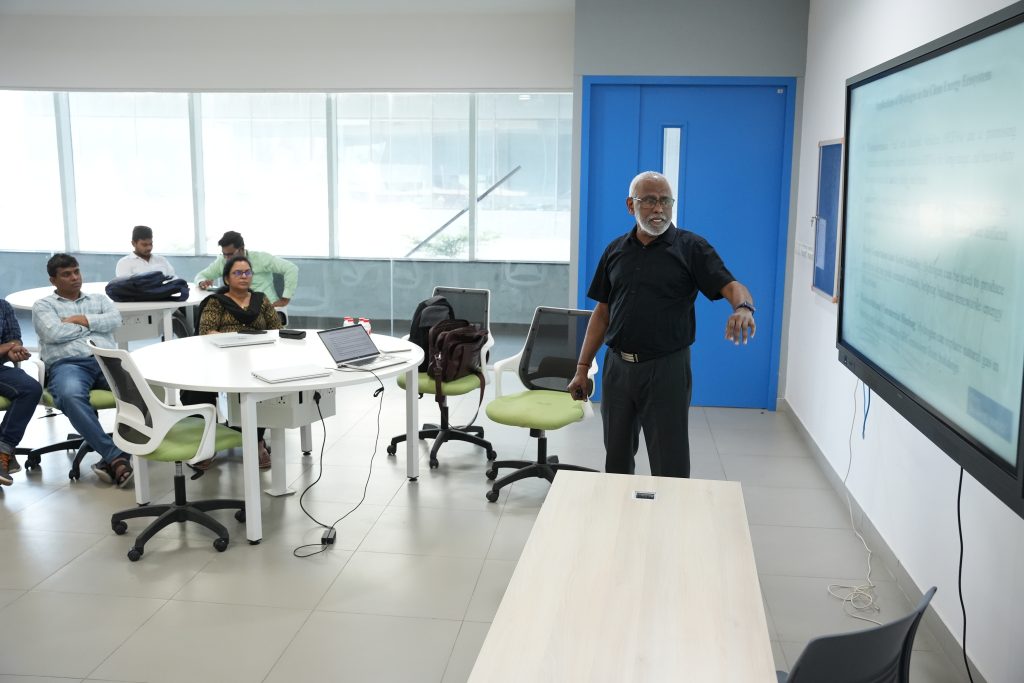
The Department of Mechanical Engineering successfully hosted an Invited talk on “Hydrogen Gas as the Future Fuel for Sustainable Power Generation and Application of Machine Learning Techniques for Modeling of Hydrogen Generation by Chemical Reactions” on February 24, 2025. The session witnessed Prof. P. S. Robi, a distinguished Professor of the Department of Mechanical Engineering at the Indian Institute of Technology (IIT) Guwahati and Former Deputy Director of IIT Guwahati, Assam, India, as the esteemed speaker.
Prof. P S Robi highlighted the importance of hydrogen as a sustainable fuel, emphasising its potential to replace fossil fuels, reduce carbon emissions, integrate with renewable energy sources, and the role of research and industry collaboration in advancing its adoption to make hydrogen a viable energy source for a sustainable future. He also addressed key challenges in hydrogen adoption, particularly the need to overcome high production costs and storage limitations.
Furthermore, Prof. Robi emphasised the role of Machine Learning in enhancing hydrogen generation efficiency through data-driven modelling and optimisation. Potential research and collaboration prospects, advocating for stronger partnerships between academia, industry, and policymakers to accelerate the advancement and implementation of hydrogen technology, were extensively discussed. Additionally, Prof. P. S. Robi highlighted the myriad of research opportunities available for faculty, research scholars, and students interested in hydrogen generation.
The talk concluded with an interactive Q&A session, during which the participants actively engaged with the speaker. The session was attended by Dr Lakshmi Sirisha Maganti, Head of the Department of Mechanical Engineering, Dr Chandan Kumar, Assistant Professor and convenor of the event, along with the faculty, scholars and students of the university.
Continue reading → - Padma Shri P T Usha Inaugurates SRM AP Sports Fest – UDGAM’25 February 28, 2025
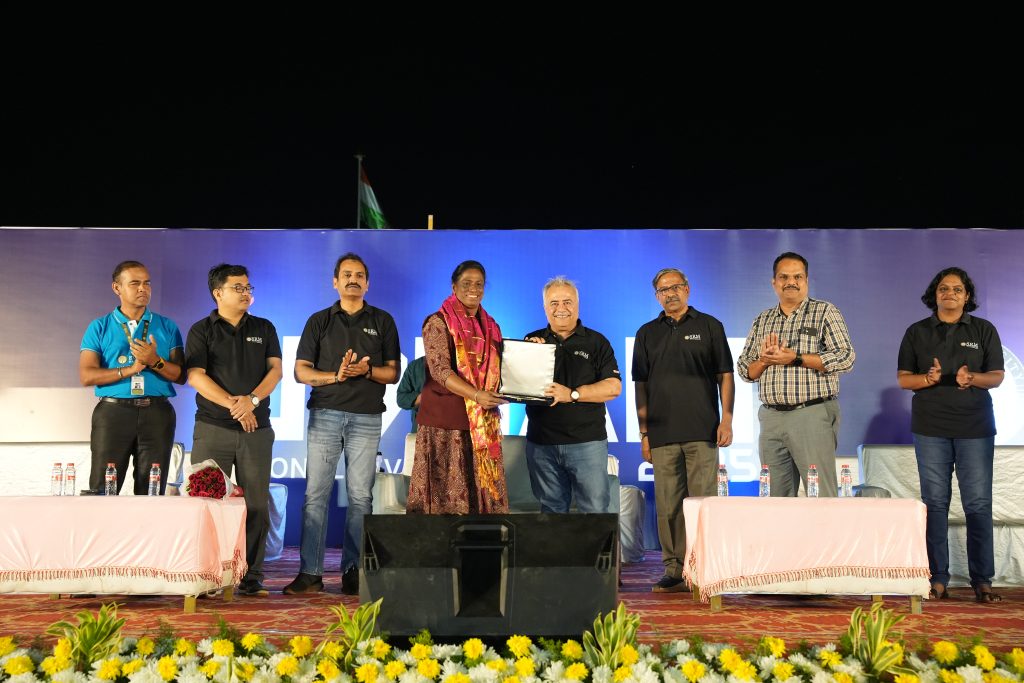 UDGAM ‘25, the National Level Sports Fest was flagged-off in the presence of former Olympian and President of Indian Olympic Association, Padma Shri P T Usha. The National level Meet commenced with the lighting of the Olympic torch marking the start of the 3-day fest. The National Level Sports Fest also transformed into a platform that honoured and celebrated the achievements of sporting legends like Jessie Raj, Retd army officer Mr Varra Prasad Reddy and Ms Akula Hyama.
UDGAM ‘25, the National Level Sports Fest was flagged-off in the presence of former Olympian and President of Indian Olympic Association, Padma Shri P T Usha. The National level Meet commenced with the lighting of the Olympic torch marking the start of the 3-day fest. The National Level Sports Fest also transformed into a platform that honoured and celebrated the achievements of sporting legends like Jessie Raj, Retd army officer Mr Varra Prasad Reddy and Ms Akula Hyama.UDGAM 2025 is set to witness 40+ competitons with 2000+ students and a promising prize pool of over rupees 10 Lakhs. The meet saw the presence of Registrar Dr R Premkumar; Director I/C Sports and Director-Campus Life Management, Mr Anup Singh Suryavanshi; Assistant Director-Sports, Dr Sushmita Kumari; Faculty, Staff and Students.
Addressing the gathering, Smt P T Usha emphasised the significance of a national level sports fest of this stature. She stated, “Sports have a profound role in shaping character. It is a journey of discipline, persistence and resilience and instills the spirit of never giving up in the face of adversity.”
Vice Chancellor Prof. Manoj K Arora remarked, “UDGAM is our signature sports fest. Our aim is to nurture athletes who will emerge as future champions with our remarkable amenities and infrastructure.” He also wished all the participants to engage wholeheartedly and embody the true spirit of sportsmanship.
The 3-day sports fest aims to bring together athletes from across the country and saw a wide participation from some of the renowned colleges like VIT-AP; Amrita Vishwa Vidyapeetham, Amaravati; Vignan University; K L University; Mohan Babu University, Tirupati; Lakireddy Bali Reddy College of Engineering (LBRCE); Seshadri Rao Gudlavalleru Engineering College, Gudlavalleru, among many others.
The fest will feature individual events, team sports and e-sports along with various track and field events for both men and women. Assistant Director-Sports Dr Sushmita Kumari commented, “UDGAM, our Annual Sports Fest is a forum that does not just test your skills but helps you embody the qualities that define great individuals. In the spirit of sportsmanship, I urge all participants to compete with integrity and passion and inspire us all with your performances”
UDGAM 2025 promises to be an exciting avenue for students to showcase their skills and compete at a national level, demonstrating their sporting spirit and talent. Participants will have the opportunity to not just compete against some of the best teams in the country and learn from top coaches but also win lucrative prizes.
Continue reading → - Dr Abhijit Dasgupta Publish his Research on Alzheimer’s disease (AD) in Nature Index Journal February 27, 2025

Dr Abhijit Dasgupta, Assistant Professor from the Department of Computer Science and Engineering, has published his groundbreaking research on using deep proteomics to analyse Alzheimer’s disease (AD) models in mice and comparison with human AD protein alterations. He has published the paper titled “Human-mouse proteomics reveals the shared pathways in Alzheimer’s disease and delayed protein turnover in the amyloidome” as one of the first authors in the Nature Index journal Nature Communications, having an impact factor of 14.7.
Abstract
Alzheimer’s disease (AD) is a complex neurodegenerative disorder characterized by amyloid-beta (Aβ) plaques and tau tangles. This study presents a comprehensive proteomic and phosphoproteomic analysis of multiple AD mouse models, comparing their molecular pathways with human AD data to evaluate their translational relevance. Using deep proteomics, the study identifies shared and distinct protein alterations across amyloidosis models (5xFAD, APP-KI), tauopathy models (3xTG), and splicing dysfunction models (BiG). While these models collectively replicate 42% of human AD protein alterations, amyloid formation significantly delays protein turnover in the amyloidome, contributing to proteome-transcriptome discrepancies. Proteomic and turnover analysis highlight the accumulation of proteins such as ApoE, CLU, and HTRA1, implicating lysosomal and autophagic dysfunction. These findings underscore the importance of protein homeostasis in AD pathology and provide a multi-omics resource for selecting appropriate mouse models for specific disease mechanisms.
Explanation of the Research in Layperson’s Terms
Alzheimer’s disease (AD) is a brain disorder that affects memory and thinking ability. Scientists know that AD is caused by harmful clumps of proteins—called amyloid-beta (Aβ) plaques—that build up in the brain. However, studying AD in humans is challenging, so researchers often use mice with genetic modifications that mimic the disease.
This study looks at different types of AD mouse models and compares their brain protein changes to those seen in humans with Alzheimer’s. The researchers analysed thousands of proteins to understand how the disease progresses, how mouse models reflect human AD, and what biological processes might be involved.
One key finding is that in both mice and humans, the buildup of Aβ plaques slows down the normal breakdown and recycling of certain proteins. This means that some proteins accumulate in the brain not just because they are being produced in excess but also because they are not being cleared efficiently. This could explain why some aspects of AD develop over time.
The study also shows that while current mouse models capture some aspects of human AD, none of them fully replicate the disease. However, when different models are combined, they represent a larger portion of the changes seen in human AD. This research provides valuable insights into how AD develops and helps scientists choose the right mouse models for studying different parts of the disease. It also highlights potential targets for future treatments focused on restoring protein balance in the brain.
Practical Implementation/Social Implications of the Research
Practical Implementation
This research helps improve Alzheimer’s disease (AD) drug development by identifying key proteins involved in disease progression. It aids in selecting better animal models for testing treatments, enhances early diagnosis through biomarkers, and supports AI-driven modelling of disease progression. The findings could lead to therapies that improve protein clearance, slowing AD progression.
Social Implications
With AD cases rising globally, this study has significant public health and economic impacts. It could reduce caregiver burden, lower healthcare costs, and improve the quality of life for ageing populations. Additionally, it encourages ethical advancements in research by promoting better human-relevant models and minimising reliance on animal testing.

Collaborations
- St. Jude Children’s Research Hospital, Memphis, TN, USA.
- University of Tennessee Health Science Center, Memphis, TN, USA
- Yale University School of Medicine, New Haven, CT, USA
Future Research Plans
The future focus will be on AI-driven modelling of temporal proteomics to understand Alzheimer’s Disease (AD) progression and identify therapeutic targets. By integrating mass spectrometry-based proteomics, machine learning, and protein turnover analysis, the goal is to bridge transcriptome-proteome discrepancies and uncover key regulatory pathways.
The research aims to develop cost-effective AI-based diagnostics for AD and cardiomyopathies, utilizing multi-omics integration for early detection and personalized treatments. This approach will contribute to precision medicine and scalable healthcare solutions for a broader impact.
Continue reading → - RadiomixNet for Advanced Pneumonia Diagnosis February 27, 2025

The research team from the Department of Electronics and Communication Engineering has published a paper titled “RadiomixNet: Integrating Radiomics and Feature Extraction for Advanced Pneumonia Diagnosis” in the journal IEEE Access with an impact factor of 3.4. Prof. Siva Sankar Yellampalli, Professor of Practice, and Mr Rahul Gowtham, PhD Scholar, have worked on RadiomixNet, a smart computer-assisted system designed to help doctors diagnose pneumonia more accurately using chest X-ray images.
Abstract
The research presents RadiomixNet, a pneumonia diagnosis framework integrating radiomics-based feature extraction with advanced classification techniques. Chest X-ray images are pre-processed using denoising, resizing, and enhancement methods to ensure uniformity and high image quality. Radiomics features are extracted using Gray Level Co-Occurrence Matrix (GLCM), Gray Level Size Zone Matrix (GLSZM), Gray Level Run Length Matrix (GLRLM), and Gray Level Dependence Matrix (GLDM). Power Spectral Density (PSD) analysis using Burg, Yule Walker, and Welch techniques enhances the understanding of frequency characteristics within the radiomics feature matrices. To classify pneumonia cases, machine learning classifiers such as Bernoulli Naïve Bayes, Random Subspace Boost, Quadratic Discriminant, and Gradient Boosting are employed. Among these, Gradient Boosting demonstrated superior performance, achieving a Cohen’s Kappa of 0.93, MCC of 0.88, Youden’s Index of 0.82, and a Log Loss of 0.27. The proposed methodology enhances diagnostic accuracy, reduces variability in pneumonia detection, and provides a structured approach to feature-based pneumonia classification.
Explanation of the Research in Layperson’s Terms
Traditional diagnosis relies on a doctor visually examining the X-ray, which can sometimes lead to misinterpretations. RadiomixNet improves this process by using advanced image processing and artificial intelligence (AI) techniques.
- Preprocessing the X-rays – Before analysis, we clean the images by removing noise (unwanted distortions), adjusting brightness, and resizing them to a standard format. This ensures all images are high quality and uniform.
- Generating More Training Data – Since AI models need a large amount of data to learn effectively, we use Generative Adversarial Networks (GANs) to create additional synthetic X-ray images. This helps balance the dataset and improve the model’s ability to detect pneumonia accurately.
- Extracting Hidden Patterns – The system breaks down X-ray images into tiny texture and shape details using advanced techniques like GLCM, GLSZM, GLRLM, and GLDM. These methods capture the structure of the lungs and highlight patterns that indicate pneumonia.
- Analysing Frequency Components – Similar to how an audio equalizer separates different sound frequencies, we analyze the X-ray’s frequency components using techniques like Burg PSD, Yule Walker PSD, and Welch PSD. This helps uncover hidden details in the images that may not be visible to the human eye.
- Making the Final Diagnosis – After extracting these detailed features, we use AI models to classify the images as “pneumonia” or “healthy.” We tested different models, including Naïve Bayes, Random Subspace Boost, Quadratic Discriminant, and Gradient Boosting. Among them, Gradient Boosting performed the best, making the most accurate predictions.
- Evaluating Accuracy – To ensure the system is reliable, we used various accuracy-checking methods such as Cohen’s Kappa, Matthews Correlation Coefficient (MCC), Sensitivity, Specificity, Log Loss, and Brier Score.
Practical Implementation/Social Implications of the Research
Practical Implementation:
RadiomixNet has the potential to be integrated into real-world healthcare systems to assist in pneumonia diagnosis. Its implementation can take place in various ways:
- Hospital Integration – RadiomixNet can be deployed in hospitals as a decision-support tool for radiologists. By analysing chest X-rays in real time, it can provide secondary validation, reducing diagnostic errors and improving accuracy in pneumonia detection.
- Telemedicine and Remote Diagnosis – The system can be integrated into telemedicine platforms, allowing doctors in rural or under-resourced areas to diagnose pneumonia remotely. Patients can upload their X-ray images, and RadiomixNet can assist in providing a preliminary diagnosis.
- Medical Imaging Centers – Radiology centers can incorporate RadiomixNet into their existing Picture Archiving and Communication Systems (PACS) to enhance diagnostic efficiency, reduce the workload of radiologists, and provide automated analysis.
- Edge Computing in Low-Resource Settings – Unlike deep learning models that require expensive GPUs, RadiomixNet is optimized for standard computing hardware. This makes it feasible for implementation in clinics and hospitals that lack high-end computational resources.
- Clinical Trials and Further Validation – Pilot studies in hospitals can validate RadiomixNet’s accuracy and reliability before widespread deployment. The system can be fine-tuned based on real-world patient data to improve its performance across diverse populations.
Social Implications:
- Early and Accurate Diagnosis – By improving pneumonia detection, RadiomixNet can enable earlier treatment, reducing complications and mortality rates, especially in high-risk populations such as children, the elderly, and immunocompromised individuals.
- Reducing Radiologist Workload – With increasing patient loads, radiologists often face diagnostic fatigue. RadiomixNet can act as an assistant, helping them focus on complex cases while automating routine pneumonia detection.
- Bridging the Healthcare Gap – In developing countries where expert radiologists are scarce, RadiomixNet can assist general practitioners and healthcare workers in diagnosing pneumonia without requiring extensive radiology expertise.
- Affordable and Scalable Solution – Since the system does not require expensive hardware, it can be implemented in low-resource settings, making advanced pneumonia detection accessible to a broader population.
- Pandemic Preparedness – Pneumonia is a major complication of respiratory infections like COVID-19. RadiomixNet can be adapted to detect pneumonia-related lung infections, aiding in large-scale screening during outbreaks.
By integrating RadiomixNet into healthcare systems, we can enhance diagnostic accuracy, improve patient outcomes, and make pneumonia diagnosis more accessible and efficient globally.
Continue reading →
RadiomixNet Implementation Framework
- Patent on Pneumonia Diagnosis Using Deep Learning Techniques February 27, 2025
 In the patent titled “A System and a Method For Real-Time Pneumonia Diagnosis On a Resource- Constrained Hardware Platform,” authored by Prof. Siva Sankar Yellampalli from the Department of ECE and his research scholars – Mr Rahul Gowtham Poola and P L Lahari, a novel diagnostic solution is presented to enhance pneumonia detection in low-resource settings. With Application No: 202441084727, this research explores the integration of advanced deep learning techniques with a compact microcontroller-based system, providing an innovative approach to improve healthcare accessibility and prompt medical intervention.
In the patent titled “A System and a Method For Real-Time Pneumonia Diagnosis On a Resource- Constrained Hardware Platform,” authored by Prof. Siva Sankar Yellampalli from the Department of ECE and his research scholars – Mr Rahul Gowtham Poola and P L Lahari, a novel diagnostic solution is presented to enhance pneumonia detection in low-resource settings. With Application No: 202441084727, this research explores the integration of advanced deep learning techniques with a compact microcontroller-based system, providing an innovative approach to improve healthcare accessibility and prompt medical intervention.Abstract:
The research focuses on the development of an innovative system for real-time pneumonia diagnosis leveraging advanced deep learning techniques integrated with edge computing technology. The proposed solution employs the MAX78000 microcontroller, a resource-constrained hardware platform, to deploy a sophisticated neural network model capable of analyzing chest X-ray images. The invention addresses the pressing need for accessible, cost-effective, and efficient diagnostic tools in under-resourced and remote environments. The system encompasses a complete diagnostic pipeline, including image acquisition via an onboard parallel camera module, real-time image processing, and display of results on a 3.5″ touch-enabled TFT screen. The deep learning model, optimized for the constraints of the MAX78000, performs real-time classification of chest X-ray images into either normal or pneumonia-affected categories. By operating entirely on-device, the system eliminates the need for high-power servers or internet connectivity, thereby reducing latency and dependency on external infrastructure. This research emphasizes portability, energy efficiency, and low-cost deployment, making the solution highly suitable for primary healthcare facilities, rural clinics, mobile health units, and disaster-response scenarios. With the ability to deliver immediate, accurate diagnoses, the device significantly enhances clinical decision-making and enables timely medical intervention. Additionally, the scalable and adaptable design of the system opens possibilities for broader medical imaging applications, extending its utility beyond pneumonia diagnostics. Experimental results showcase the performance of the neural network model, demonstrating prediction accuracies ranging between 66% and 97% for different test cases on the MAX78000 microcontroller. These findings underline the potential of the proposed system as a transformative tool for advancing point-of-care diagnostics in low-resource settings.
Explanation in Layperson’s terms.
The research presents a compact, affordable device that helps doctors quickly detect pneumonia by analyzing chest X-ray images in real-time. It uses advanced artificial intelligence (AI) technology, called deep learning, to examine the X-rays and determine whether a patient has pneumonia or not. What makes this device special is that it works entirely on a small, low-power microcontroller called the MAX78000, instead of needing powerful computers or internet access. The process begins when the device captures a chest X-ray image using its built-in camera. Then, the AI model, which has been trained to recognize patterns associated with pneumonia, analyzes the image. The results are displayed instantly on a small screen, allowing healthcare providers to make quick decisions. This real-time diagnosis can be life-saving, especially in emergency or rural settings where access to advanced medical equipment or high-speed internet is limited. Technically, this system combines AI and edge computing, meaning all the heavy processing happens directly on the device rather than in remote servers. This design keeps costs low, ensures patient data privacy, and makes the device highly portable and energy-efficient. The technology can work even in places with unreliable electricity, making it ideal for use in mobile health units, rural clinics, or disaster zones. Additionally, the invention can be adapted for diagnosing other diseases, showcasing its versatility in improving healthcare globally.
Practical Implementation
This research can be practically implemented as a compact, standalone device for diagnosing pneumonia in healthcare settings where access to advanced medical equipment is limited. It works as follows:
- Deployment in Rural Clinics and Mobile Health Units: The device can be used in clinics in remote or underserved areas where large X-ray machines and advanced computing resources are unavailable. It provides on-the-spot diagnosis.
- Point-of-Care Diagnostics: The portability and integration of image acquisition, AI-based processing, and display into a single unit make it ideal for bedside use in hospitals or during emergency care.
- Disaster Response: Its low-power and internet-free design make it a critical tool in disaster zones, refugee camps, or any setting where power and connectivity are unreliable.
- Telemedicine Integration: The device can complement telemedicine by providing accurate diagnostic results to remote doctors, helping bridge the gap between frontline healthcare workers and specialists.
Social Implications
Improved Access to Healthcare: By making pneumonia diagnosis accessible in rural and underserved regions, this device can drastically reduce the gap in healthcare services between urban and remote areas. It empowers healthcare providers in low-resource settings to deliver timely diagnoses.
- Affordability: The use of a low-cost microcontroller ensures that the device is affordable for governments and healthcare organizations, particularly in developing countries. This can enhance healthcare access for low-income populations.
- Reduced Mortality Rates: Pneumonia is a leading cause of death in children under five and elderly individuals, especially in low-income countries. This device’s ability to provide real-time, accurate diagnosis allows for earlier intervention and treatment, potentially saving countless lives.
- Privacy and Security: Since all data is processed locally on the device, it ensures patient privacy by eliminating the need to transfer sensitive medical data to cloud servers, addressing concerns about data security.
- Scalability: The underlying technology can be adapted to diagnose other diseases, creating a broader impact on global health. For example, similar systems could be used for tuberculosis, COVID-19, or other respiratory conditions, further enhancing healthcare infrastructure.
By addressing critical gaps in diagnostic capabilities and ensuring accessibility and affordability, this research has the potential to transform healthcare delivery and improve quality of life, especially in marginalized communities.
Collaborations:
Rahul Gowtham Poola, Ph.D Scholar, Dept of ECE, SRM University-AP
P.L. Lahari, Ph.D Scholar, Dept of ECE, SRM University-AP
Prof. Siva Sankar Yellampalli, Professor of Practice, Dept of ECE, SRM University-AP













